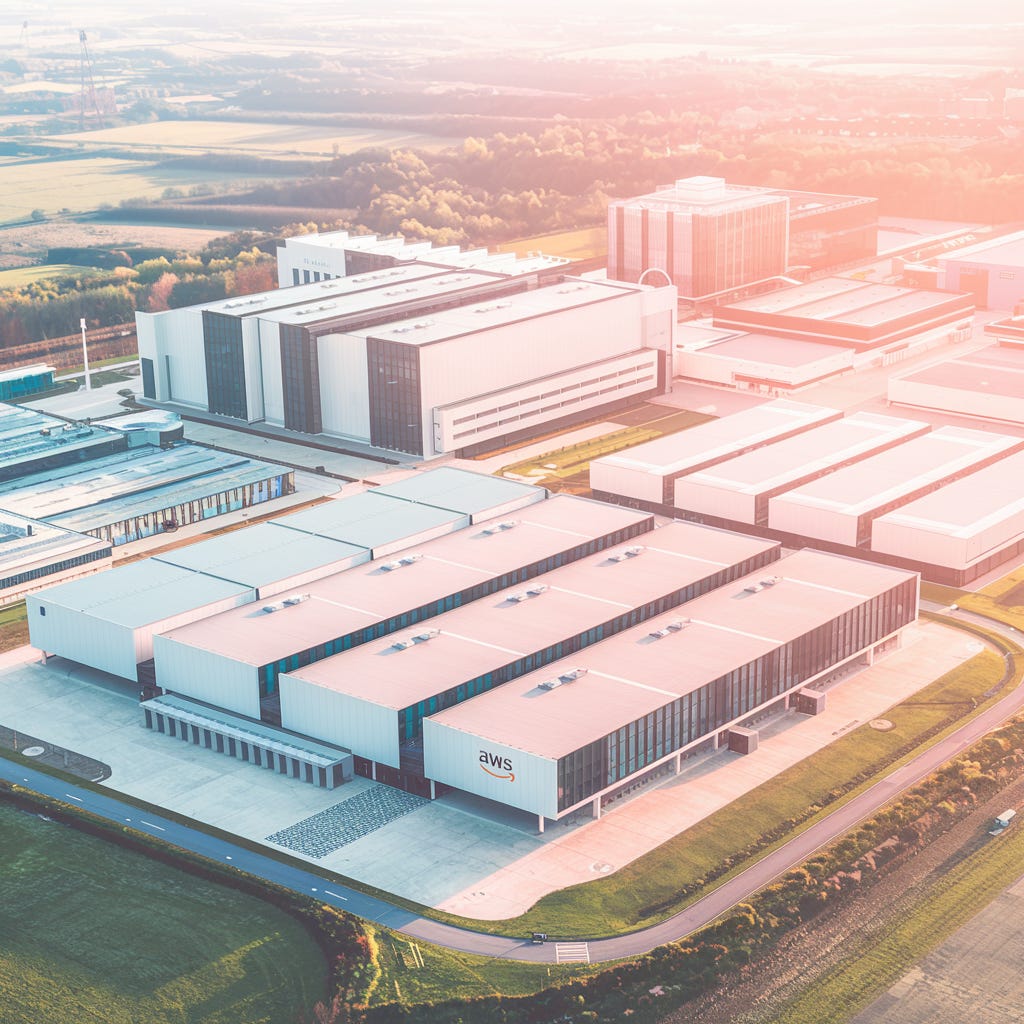Is Amazon Building Britain’s AI Future (or Buying It)?
Amazon’s £40B investment isn’t about jobs. It’s about control—of compute, power, and policy.
Welcome to Global Data Center Hub. Join 1400+ investors, operators, and innovators reading to stay ahead of the latest trends in the data center sector in developed and emerging markets globally.
When Amazon announced its £40 billion investment in the UK, the headlines all sounded the same:
“Thousands of new jobs.”
“Amazon backs Britain’s economy.”
“Global tech giant boosts UK growth.”
But that’s not what really happened.
This wasn’t a bet on jobs.
It was a bet on control.
The Surface Narrative: Logistics, Jobs, and Levelling Up
The visible components are familiar:
Four new fulfillment centers
Two new office buildings
Upgrades to 100+ logistics facilities
Thousands of full-time jobs in Hull, Northampton, and the East Midlands
It’s textbook playbook: partner with government, align with regional development goals, and ride the media wave of “levelling up.”
But none of that justifies a £40 billion commitment.
The Real Story: Compute Sovereignty and Power Dominance
The real reason Amazon made this move?
To lock in a long-term AI infrastructure stronghold: powered, protected, and politically aligned.
Here’s what Amazon actually secured:
£8 billion for AWS data center buildout
Control over hyperscale cloud regions serving public + private AI workloads
CNI (Critical National Infrastructure) designation
Preferential access to land, permitting, and grid capacity
Grid-scale renewable projects and diesel-backed reliability
This isn’t logistics. It’s digital sovereignty: packaged as economic development.
Data Centers Are the New National Infrastructure
One AWS site in Bedfordshire alone will consume 114.8 million kWh/year, more electricity than 42,500 homes.
That’s more than the entire town of Burnley ( about ~95k people or 42k households) .
To support this, Amazon is deploying:
42 diesel backup generators
Fortnightly testing routines
And 950MW of renewable generation capacity across 40 UK solar/wind projects
This isn’t about shipping packages.
It’s about guaranteeing compute capacity in a world where AI demand is outpacing energy infrastructure.
Why This Matters
Governments are starting to realize something:
If you don’t control your compute stack, you don’t control your future.
And hyperscalers like Amazon are reading the room.
By aligning with national priorities (jobs, GDP, innovation), they’re securing long-term control over the infrastructure that will run:
Healthcare (NHS on AWS)
Defense (sovereign cloud)
Education (AI curriculum partnerships)
Finance and life sciences
In the AI era, compute is sovereign.
Power is leverage.
And AWS is quietly becoming both provider and gatekeeper.
What’s Next
More countries will follow this playbook:
Offer jobs and investment → gain policy alignment
Lock in long-term PPA-backed AI data centers → gain compute control
Frame it as national innovation → avoid scrutiny
Meanwhile, Amazon (and its peers) will deepen their integration into the critical infrastructure layer of modern economies.
The future won’t be about the number of racks you build.
It’ll be about where you’re allowed to build them and how much energy you can guarantee to run them.
The Bottom Line
This wasn’t a £40 billion gift to the UK economy.
It was a long-term lease on the future of British compute.
If you're still looking at data centers as real estate, you're missing the bigger move.
They’re not buildings anymore.
They’re sovereign infrastructure assets—and Amazon is playing to own the base layer.


